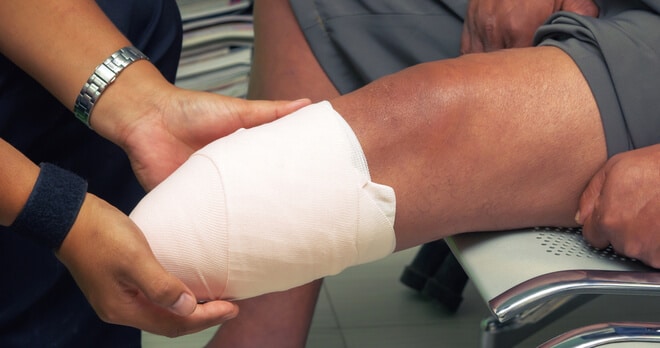How does meningitis lead to limb loss, and can limb loss be prevented?

There are various causes of Meningitis in the UK, both viral and bacterial. Bacterial meningitis is a rare, but very serious, form of meningitis. It is most commonly caused by the meningococcal bacteria in the UK which has various strains, or other bacteria such as e. coli and Group B Strep, to name but a few.
How meningitis leads to amputation
Meningococcal disease is the most common cause of bacterial meningitis, and 10% of cases will result in death. Timely diagnosis and appropriate treatment are essential to ensure a good recovery.
Once the meningococcal bacteria enters the bloodstream it can cause septicaemia (a serious blood stream infection) by multiplying and releasing toxins. These toxins can then damage blood vessels, reducing the flow of oxygen to organs and skin tissue.
The body tends to prioritise (and try to maintain blood supply to) vital organs, often at the expense of the extremities. Because of the damage to blood vessels, extremities can then be starved of blood and oxygen, at which point underlying tissues begin to die. It is this process that leads to the amputation of fingers, toes and limbs.
Recent research into preventing limb loss from meningitis
There has been some encouraging research in recent years into the mechanism of the runaway blood clotting that is typical in severe meningococcal disease. Scientists in one study found that, when meningococcal bacteria bind to the lining of blood vessels, a molecule called ADAM10 becomes active and prevents the body’s natural ability to stop uncontrollable clotting. It is hoped that this discovery will lead to new therapies.
However, for the time being, the best way to combat bacterial meningitis is rapid referral, diagnosis and treatment with IV antibiotics (as well as oxygen and corticosteroids depending upon how advanced the disease is). The right antibiotics will root out and kill the harmful bacteria, and prevent this bacteria from multiplying and releasing toxins. If this is done in a timely fashion, the risk of limb loss is greatly reduced.
Once a diagnosis is made, treatment tends to take place quickly. Worryingly however, delays are often at the diagnostic stage. A report in 2018 undertaken by the Meningitis Research Foundation found that, in 134 accounts taken from parents whose children displayed symptoms of meningitis, 103 were sent home with reassurances that it was a milder condition. In 23 of these cases, the child died, whilst others suffered serious injuries including amputations.
Can the harm be avoided?
Bacterial meningitis is a serious condition that can have devastating life-long consequences, including limb loss, if the disease is allowed to proliferate without timely intervention. With the correct IV antibiotic regime though, the progression of the disease can be avoided, and amputation, or the risk of it, prevented or at the very least, greatly reduced.
There seems to be some evidence that up-skilling in primary care and A&E triage settings needs to take place and it is vital that primary care clinicians and clinicians in A&E have had appropriate training to ensure that they are equipped to recognise the symptoms of meningitis.
However just raising awareness so that patients are able to identify potentially sinister symptoms in themselves and their children is part of the battle.
If you think you have a claim for medical negligence compensation, please contact our enquiries team or find out more on our website.
Call now









